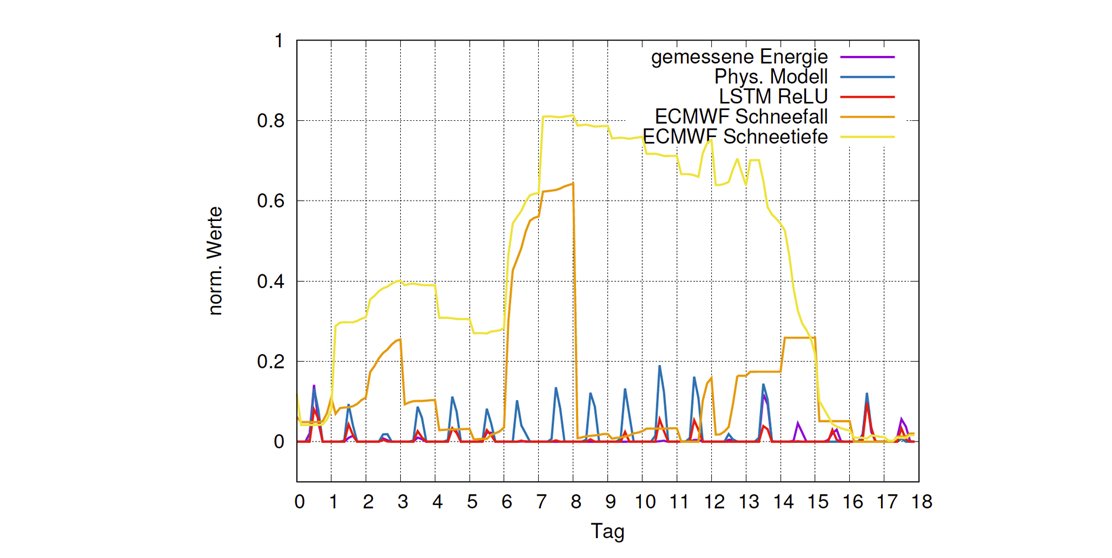Performance predictions using analogy-based prediction systems
Power predictions, e.g. for wind energy and solar power systems – that’s what Enercast GmbH offers. What amount of power does, say, a photovoltaic system give under certain weather conditions? In order to make an accurate forecast for this, special algorithms are required. Those algorithms can determine future conditions through machine-learning-processes, and with the help of past performance and meteorological data.
Research and development
This is where the research done by Vitali Pankraz comes into play. The computer science student at Kassel University is currently writing his master’s thesis on the topic of “Development of an Analogy-based Prediction System for Weather-dependent Renewable Energies” at Enercast. “We offer students the opportunity to write industry-oriented theses or research papers in our company. The advantage is: here you will find interesting and ground-breaking topics that are individually adapted to the study objective. This allows you to practically work with us on new ways of integrating renewable energies into power supply,” explains Thomas Landgraf, CEO of enercast.

Die beiden Pfeile “NWP” und “Messdaten” repräsentieren einen zeitlichen Verlauf von Wetterdaten und Messdaten. t=0 ist der aktuelle Zeitpunkt. Wetterdaten aus dem Prognosefenster “F” werden mit historischen Wettersituationen aus “H” verglichen und es werden vier ähnliche Wettersituationen (blaue Kästen) identifiziert. Die vier ähnlichen Wettersituationen aus dem historischen Bereich “H” haben korrespondierende Messwerte bzw. Leistungsdaten (oliv-farbene Kästen). Diese werden im Baustein “Ens” zu einer Prognose verarbeitet, welche als grüner Kasten darstellt ist.
Determining the future through the past
Pankraz has already been working together with Enercast since 2012 and develops forecasting procedures for power prediction. His approach is based on an analogous procedure, which works with historical data.
Using an historical database, which contains weather data as well as power measurements, predictions for renewable energies are to be made available for a future period (the so-called prediction window). To this end, a weather forecast is recorded for the prediction window to be studied and it is then compared to the ones from the past.
If similar historical weather conditions can be identified from among past forecasts, the corresponding historical measurements are used to calculate power prediction for the prediction window. From this basic idea, three research questions are being developed:
- How can an analogous case be identified or to what degree can it be determined?
- How many analogous cases are most suitable for the creation of a prediction?
- How can the analogous cases be suitably processed into a prediction?
Interdependence between meteorological data and measurements is the only requirement for using the procedure developed. . This data can generally be bought from external service providers. Corresponding measurements are therefore made available by system operators. The prediction quality thereby rises with the quantity of historical data: the more the data being compared, the higher the likelihood of finding a particularly similar historical weather situation. “You will not find exact matches, but many similar ones,” says Pankraz, explaining the further development of his analogous procedure.
Who benefits from this?
Customers of the prediction system include, for example, grid operators, who need predictions in order to ensure the stability of a power grid. Direct marketers of fluctuating renewable energies also depend on power predictions in order to be able to do business on the electricity market. The computer science student may have used the scenario surrounding solar power predictions as the main focus of his thesis, but the same methodology can be used universally in many different individual applications. “This model can also be used in other areas, such as the prediction of wind energy or consumption predictions for cooling systems,” he reaffirms.


 Back to overview
Back to overview 

